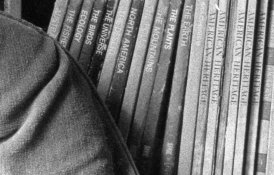gainer
Subscriber
- Joined
- Sep 20, 2002
- Messages
- 3,699
At the present time it would in fact be more to ask for than I am able to provide. As you know, there is a lot involved in finding the contrast versus developing time for a particular film-developer combination. My equipment for doing the necessary measurements is limited, and my equipment for walking from one end of the darkroom to the other is also limited. Those appendages I used to walk, run and even dance on occasionally (I seem to remember they are called "legs") are causing me great pain.Patrick;
Would it be too much to ask if the two photos matched in contrast and density? That is my only reservation.
PE
No one else seems to be doing anything but theorizing. I am feeling very much put upon because when I try to get some testing of theories started, the criticism of my work seems to be the most important business at hand.
If I were to change contrast and density, it would be by digital means. If I had done that with perfection, you would never have known the difference. Believe me, the amount of sulfite up to as much as 380 grams per liter of stock has little or nothing to do with grain or sharpness in a 1+50 dilution. The effects will be on storage life of the stock, working life and activity of the working solution.









 )
)